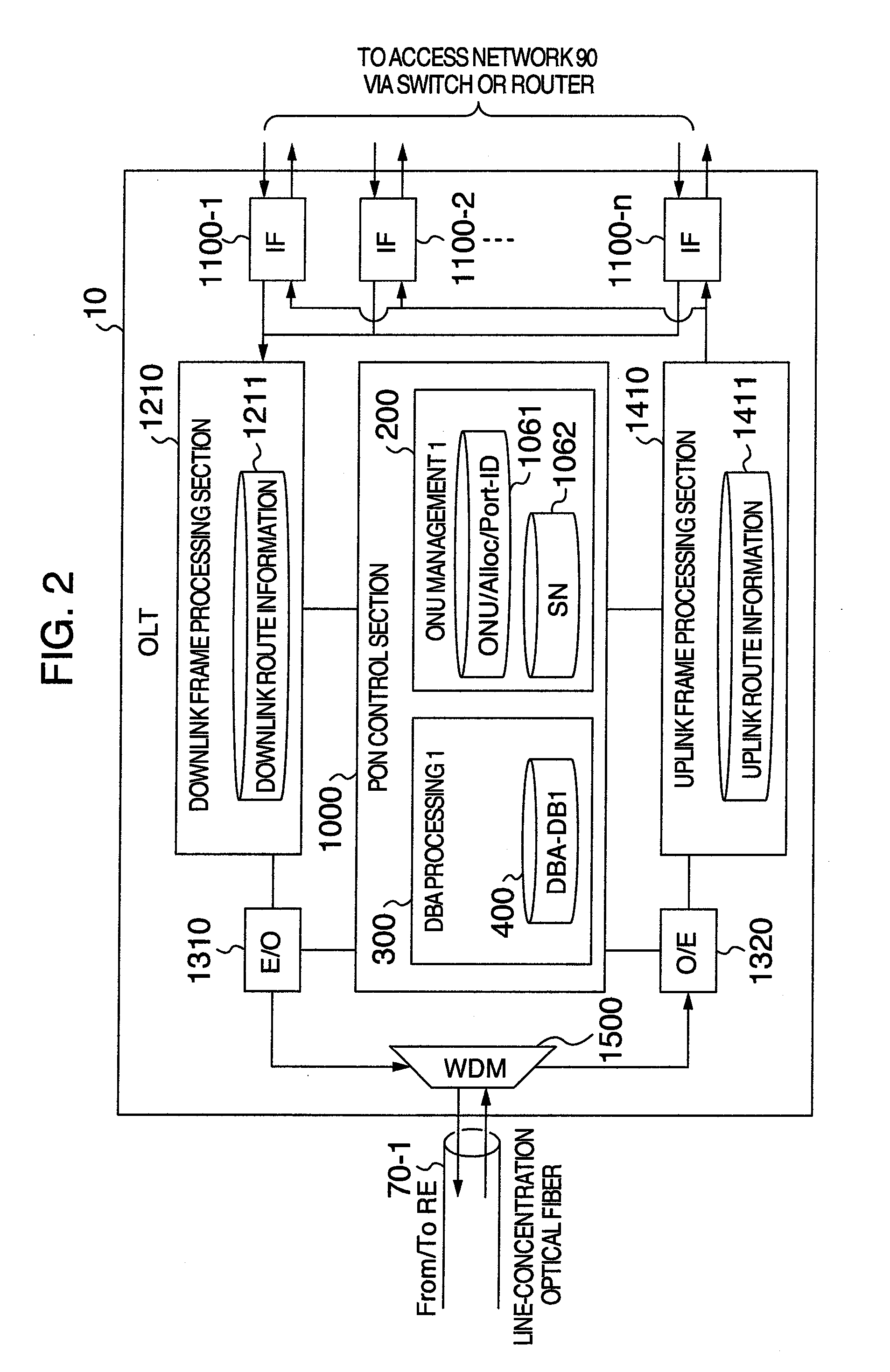Optical communication system and communication bandwidth control method
a communication system and optical communication technology, applied in the field of optical communication system configuration, can solve the problems of increasing the number of slave stations, affecting the quality of the signal required to have a real time nature, and increasing the interruption (standby) time of each onu, so as to increase the bandwidth use efficiency over the line-concentration optical fiber, reduce processing load on the olt side, and increase the number of accommodated slave stations
- Summary
- Abstract
- Description
- Claims
- Application Information
AI Technical Summary
Benefits of technology
Problems solved by technology
Method used
Image
Examples
Embodiment Construction
[0031]Hereinafter, the configuration and operation of a PON system according to the present invention will be described using the accompanying drawings, with the configuration and operation of a G-PON specified by ITU-T Recommendation G984.3 as an example.
[0032]FIG. 1 is a network configuration diagram showing a configuration example of an optical access network using the PON of the present invention, and shows a configuration example when an RE is inserted into a line-concentration optical fiber of the PON.
[0033]A PON 40 comprises an optical line unit (OLT) 10, a plurality of optical network units (ONUs) 20-1-20-n, an optical splitter 30, a line-concentration optical fiber 70, a plurality of branch optical fibers 71-1-71-n, and a reach extender (RE) 10000 inserted between line-concentration optical fibers 70-1 and 70-2 in the middle of the line-concentration optical fiber 70. In the PON 40, an optical access network 1 is a network, wherein each of the ONUs 20-1-20-n is coupled to a...
PUM
 Login to View More
Login to View More Abstract
Description
Claims
Application Information
 Login to View More
Login to View More - R&D
- Intellectual Property
- Life Sciences
- Materials
- Tech Scout
- Unparalleled Data Quality
- Higher Quality Content
- 60% Fewer Hallucinations
Browse by: Latest US Patents, China's latest patents, Technical Efficacy Thesaurus, Application Domain, Technology Topic, Popular Technical Reports.
© 2025 PatSnap. All rights reserved.Legal|Privacy policy|Modern Slavery Act Transparency Statement|Sitemap|About US| Contact US: help@patsnap.com



